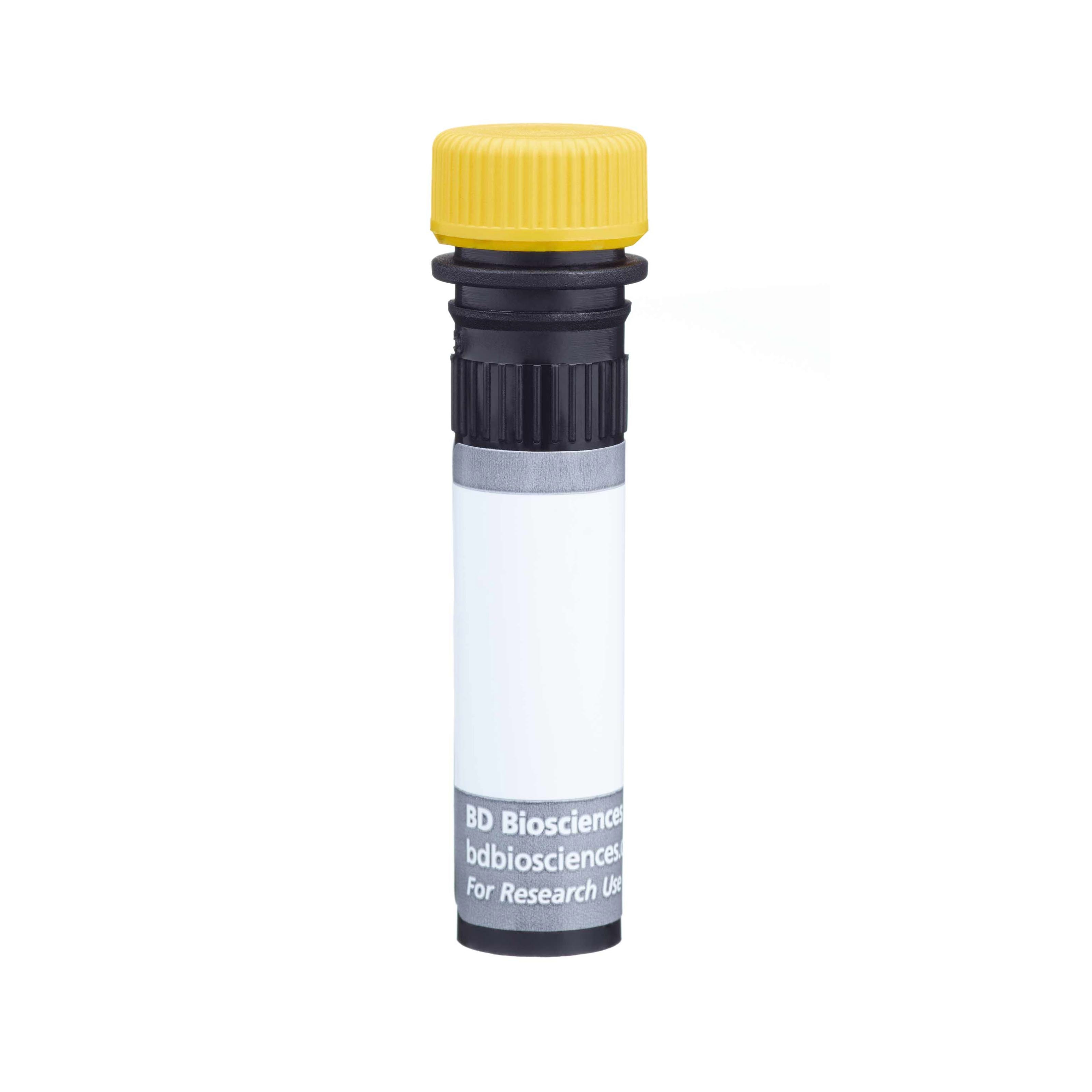Old Browser
This page has been recently translated and is available in French now.
Looks like you're visiting us from {countryName}.
Would you like to stay on the current country site or be switched to your country?


Regulatory Status Legend
Any use of products other than the permitted use without the express written authorization of Becton, Dickinson and Company is strictly prohibited.
Preparation And Storage
Recommended Assay Procedures
For optimal and reproducible results, BD Horizon Brilliant Stain Buffer should be used anytime two or more BD Horizon Brilliant dyes (including BD OptiBuild Brilliant reagents) are used in the same experiment. Fluorescent dye interactions may cause staining artifacts which may affect data interpretation. The BD Horizon Brilliant Stain Buffer was designed to minimize these interactions. More information can be found in the Technical Data Sheet of the BD Horizon Brilliant Stain Buffer (Cat. No. 563794).
Product Notices
- This antibody was developed for use in flow cytometry.
- The production process underwent stringent testing and validation to assure that it generates a high-quality conjugate with consistent performance and specific binding activity. However, verification testing has not been performed on all conjugate lots.
- Researchers should determine the optimal concentration of this reagent for their individual applications.
- An isotype control should be used at the same concentration as the antibody of interest.
- Caution: Sodium azide yields highly toxic hydrazoic acid under acidic conditions. Dilute azide compounds in running water before discarding to avoid accumulation of potentially explosive deposits in plumbing.
- For fluorochrome spectra and suitable instrument settings, please refer to our Multicolor Flow Cytometry web page at www.bdbiosciences.com/colors.
- Please refer to www.bdbiosciences.com/us/s/resources for technical protocols.
- BD Horizon Brilliant Stain Buffer is covered by one or more of the following US patents: 8,110,673; 8,158,444; 8,575,303; 8,354,239.
- BD Horizon Brilliant Ultraviolet 661 is covered by one or more of the following US patents: 8,110,673; 8,158,444; 8,227,187; 8,575,303; 8,354,239.
Companion Products






The 11G7 monoclonal antibody specifically binds to human CD282, which is also known as Toll-like receptor 2 (TLR2). CD282 is expressed on monocytes, granulocytes, and dendritic cells. Toll-like receptors (TLRs) play a critical role in antimicrobial resistance. Moreover, TLRs have been shown to activate a number of signal transduction pathways which lead to the induction of genes involved in host defense. TLRs are type-1 transmembrane receptors characterized by the presence of extracellular leucine-rich repeat and intracellular Toll/IL-1 receptor domains. At least 12 mammalian TLRs have been identified, each recognizing a distinct bacterial or viral pathogen-associated molecular pattern, termed PAMP. Peptidoglycan from Gram-positive bacteria, lipoproteins and lipopeptides from several bacteria, glycophosphatidylinositol, lipoarabinomannan, porins, and zymosan from yeast have been reported to be the ligands for TLR2.
It has been reported that mAb 11G7 inhibits the production of inflammatory cytokines via certain TLR2 ligands including TLR2/TLR1 ligands, lipoarabinomannan and PAM3CSK4. However, 11G7 antibody does not inhibit the production of inflammatory cytokines with zymosan, a TLR2/TLR6 ligand. Please note that this application has not been tested at BD Biosciences Pharmingen.
The antibody was conjugated to BD Horizon™ BUV661 which is part of the BD Horizon Brilliant™ Ultraviolet family of dyes. This dye is a tandem fluorochrome of BD Horizon BUV395 with an Ex Max of 348-nm and an acceptor dye with an Em Max at 661-nm. BD Horizon Brilliant BUV661 can be excited by the ultraviolet laser (355 nm) and detected with a 670/25 filter and a 630 nm LP. Due to cross laser excitation of this dye, there may be significant spillover into channels detecting APC-like emissions (eg, 670/25-nm filter).
Due to spectral differences between labeled cells and beads, using BD™ CompBeads can result in incorrect spillover values when used with BD Horizon BUV661 reagents. Therefore, the use of BD CompBeads or BD CompBeads Plus to determine spillover values for these reagents is not recommended. Different BUV661 reagents (eg, CD4 vs. CD45) can have slightly different fluorescence spillover therefore, it may also be necessary to use clone-specific compensation controls when using these reagents.
Development References (5)
-
Kurt-Jones EA, Mandell L, Whitney C, et al. Role of Toll-like receptor 2 (TLR2) in neutrophil activation: GM-CSF enhances TLR2 expression and TLR2-mediated interleukin 8 responses in neutrophils. Blood. 2002; 100(5):1860-1868. (Biology). View Reference
-
Lien E, Sellati TJ, Yoshimura A, et al. Toll-like receptor 2 functions as a pattern recognition receptor for diverse bacterial products. J Biol Chem. 1999; 274(47):33419-33425. (Biology). View Reference
-
Medzhitov R. Toll-like receptors and innate immunity. Nat Rev Immunol. 2001; 1(2):135-145. (Biology). View Reference
-
Sandor F, Latz E, Re F, et al. Importance of extra- and intracellular domains of TLR1 and TLR2 in NFκB signaling. J Cell Biol. 2003; 162(6):1099-1110. (Clone-specific: Blocking, Inhibition). View Reference
-
Zhou S, Cerny AM, Bowen G, et al. Discovery of a novel TLR2 signaling inhibitor with anti-viral activity.. Antiviral Res. 2010; 87(3):295-306. (Clone-specific: Flow cytometry). View Reference
Please refer to Support Documents for Quality Certificates
Global - Refer to manufacturer's instructions for use and related User Manuals and Technical data sheets before using this products as described
Comparisons, where applicable, are made against older BD Technology, manual methods or are general performance claims. Comparisons are not made against non-BD technologies, unless otherwise noted.
For Research Use Only. Not for use in diagnostic or therapeutic procedures.
Report a Site Issue
This form is intended to help us improve our website experience. For other support, please visit our Contact Us page.